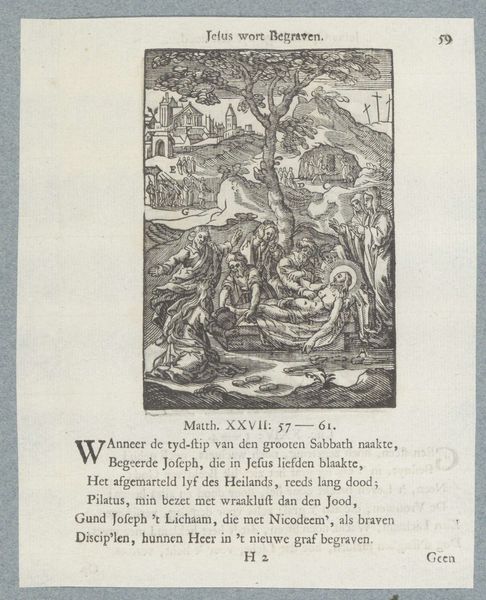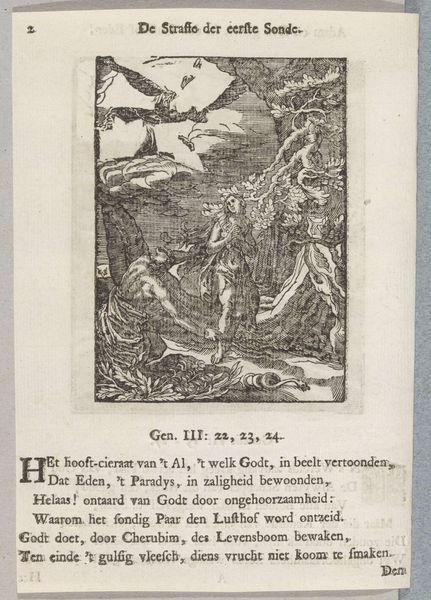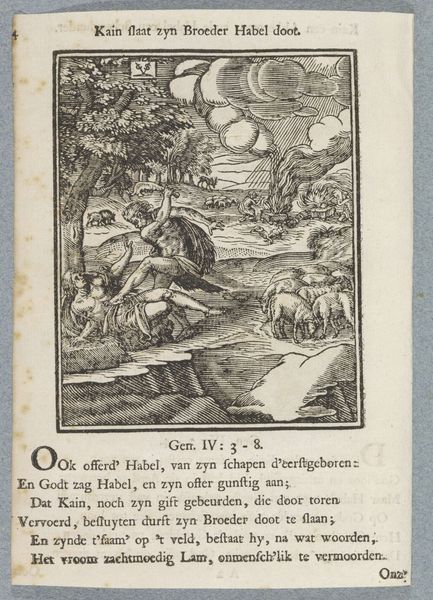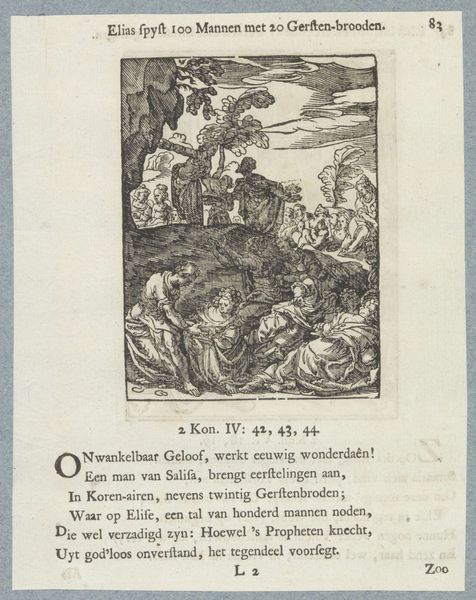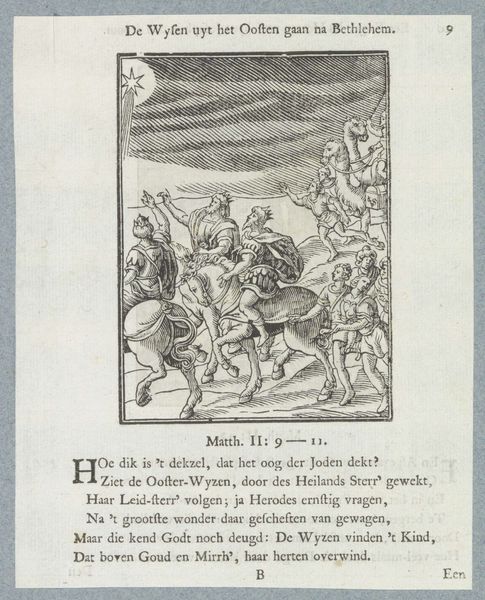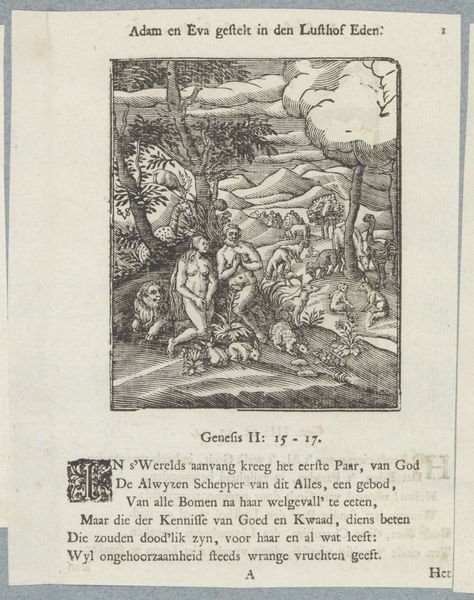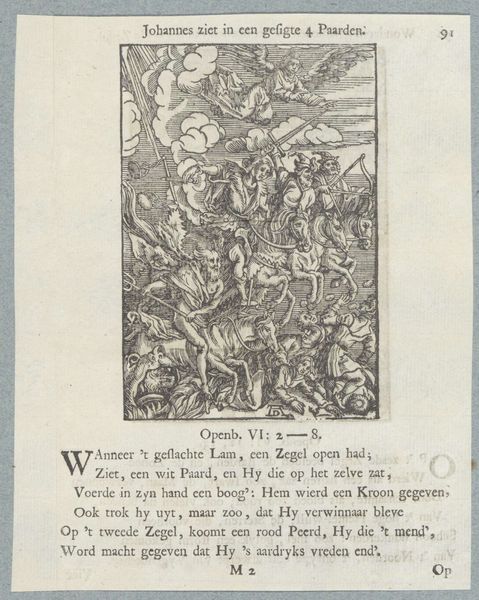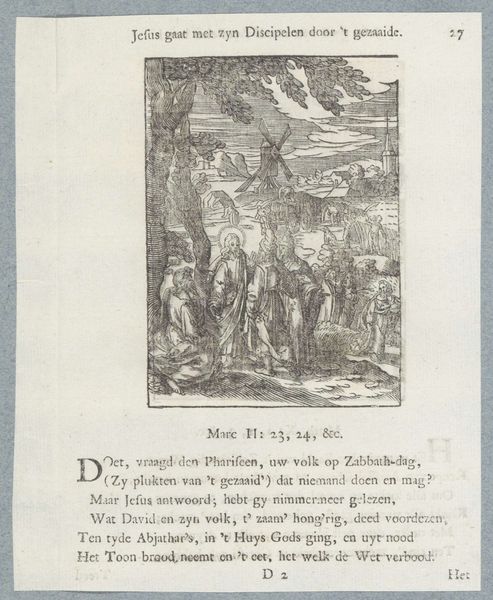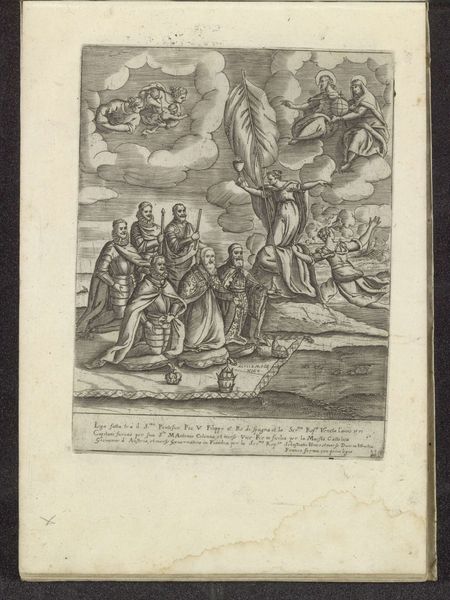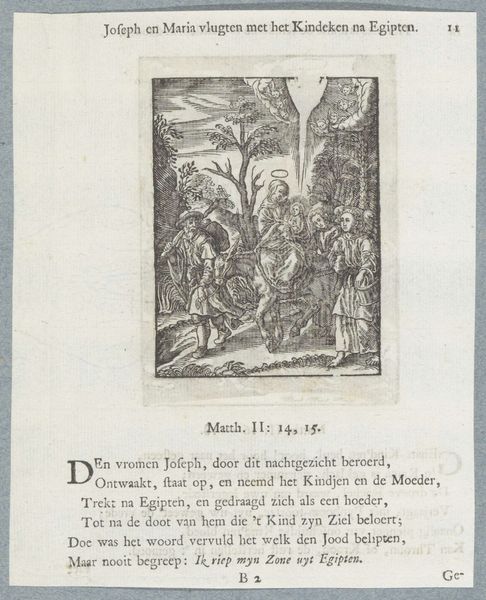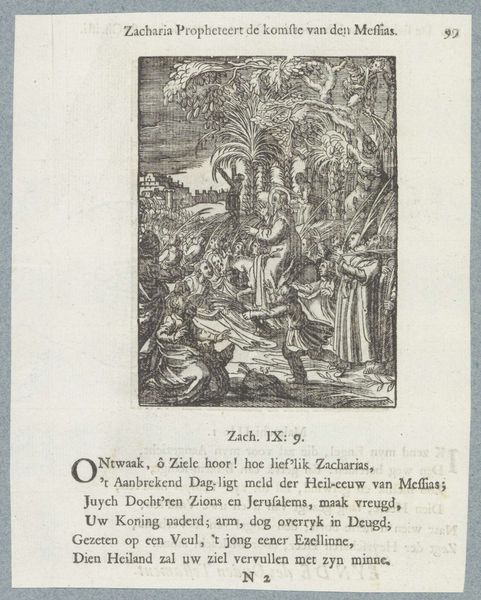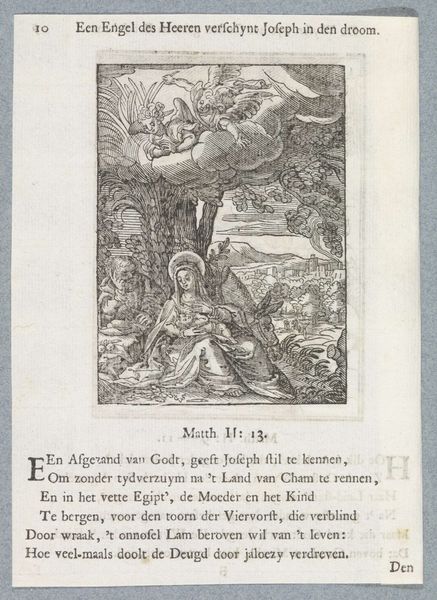
print, engraving
#
allegory
#
baroque
# print
#
old engraving style
#
figuration
#
history-painting
#
engraving
Dimensions: height 111 mm, width 77 mm, height 175 mm, width 134 mm
Copyright: Rijks Museum: Open Domain
Christoffel van Sichem II created "Seven Plagues" in 1581 using woodcut techniques. The composition, sharply divided, pits the celestial against the terrestrial. Observe the upper section dominated by angels, their forms fluid. They pour vials onto the scene below. The lower half features rigid, angular figures of men and a monstrous beast, all rendered in stark contrast. This visual dichotomy creates a sense of impending doom. This artwork highlights the tensions between divine will and human suffering, typical of religious art during periods of upheaval. Consider how the contrasting textures—smooth for the angels, rough for the earthly figures—reinforce this division. The scene reflects the anxieties of its time through its symbolic language, inviting viewers to contemplate themes of morality and divine judgment. Notice the way light and shadow are manipulated to emphasize the emotional weight. The image's enduring power comes from its ability to articulate cultural and philosophical ideas.
Comments
No comments
Be the first to comment and join the conversation on the ultimate creative platform.
